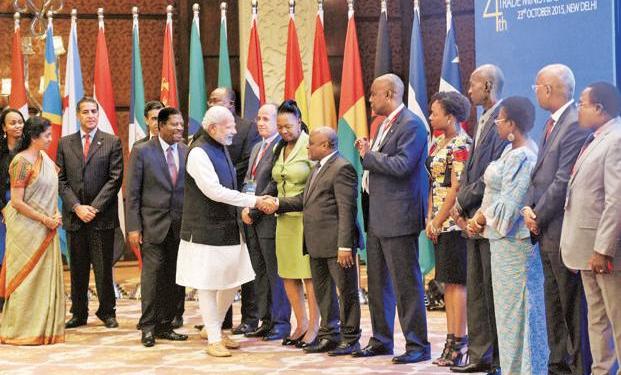The Modi government pursued foreign policy banking on the influence of the persons of Indian origin and personal popularity of Prime Minister in the developed world. But to buy the allegiances of developing countries, the Modi government increase development grant. The development assistance given by India to countries in South Asia, Africa, and other developing countries has doubled in the last five years. In 2013-14, India gave 11 billion dollars in development assistance and the amount increased to 28 billion dollars in 2018-19. In the last fiscal year, Line of credit for 278 projects was extended with credit of 28 billion dollars in 63 countries mostly from Asia and Africa.

India has stopped taking development grant like it used to do in the 1950s and 1960s. The country is no longer a fragile nation which would need foreign development grant or mercy to restore normalcy. India is the sixth largest economy of the world and is soon expected to become the fifth largest, overtaking the United Kingdom. Being one of the largest economies of the world and also the fastest growing economy in the world, India has more than sufficient resources to resolve its internal crises.
The economic growth has helped the country to accumulate enough resources to pursue a foreign policy agenda through development grants. In the last few years, India tried to match Chinese grants in countries of Asia, Africa, and Latin America. “I would say that there is a conscious effort by India to increase its lines of credit portfolio in recent years because of the increased penetration of China in areas and regions seen as India’s traditional strongholds,” said former foreign secretary Kanwal Sibal.
The major Indian effort was concentrated in South Asia and Africa. In the last decade, China has become very aggressive in foreign policy agenda especially after Xi Jinping became the president. The Belt and Road Initiative (BRI), a brainchild of Jinping started in early 2010 is being used as a tool for foreign policy goals.
China, a late-comer to the African continent started increasing its engagement after its newfound wealth in post-economic liberalization period. The hunger for raw material among Chinese corporates brought the country to the African continent. The deep pockets of China allowed it to expand more rapidly than India and invested 220 billion dollars between 2005 and 2018. The influence of India on the continent became limited in the last few decades.
However, under the Modi government, the country again started increasing engagement with the African continent through various projects in the field of electricity, agriculture, and telecommunication. India and Japan announced the Asia Africa Growth Corridor (AAGC) for human resource development and capacity building in Africa. India has partnered with Japan to build cancer hospital in Kenya, a country on the eastern seaboard of Africa. India would also set up an ICT center in Ethiopia with the help of UAE. China has been a major influencer in various African nations in last one and a half decade, India is trying to counterbalance this under Modi government. India has also planned fiber optics and wireless networks between India and countries of the African Union. India would provide assistance to African countries in the field of e-governance, e-commerce, and infotainment.
The growing economy will provide India fiscal space for closer foreign engagement in the near future. Modi government has taken steps to increase its presence in Africa and South Asian countries.


































